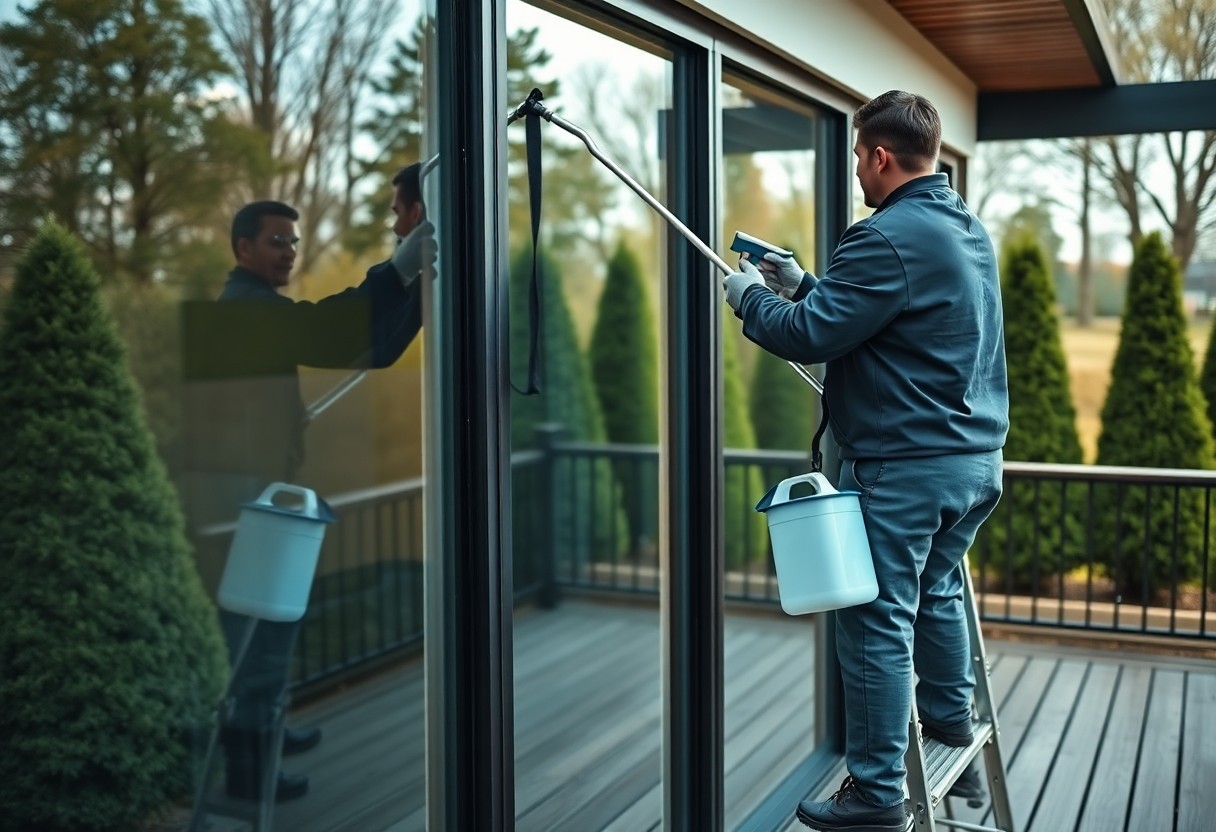
Residential Window Tint In Maricopa – Enhancing Privacy Without Sacrificing Natural Light
There’s an effective way to increase your home’s privacy in Maricopa without blocking daylight: residential window tinting offers selective light transmission so you keep bright interiors while reducing visibility from outside. Choosing the right film improves UV protection, reduces glare and cooling costs, and preserves views; consult licensed installers to match tint level, warranty, and local codes so your windows perform safely and attractively. Benefits of Residential Window Tint Beyond aesthetics, window tint delivers measurable advantages for Maricopa homes: up to 99% UV blockage, 30-50% reduction in solar heat gain with high-performance films, and improved comfort that can cut cooling costs 10-20% during summer months. These performance gains protect interiors, enhance privacy, and reduce HVAC runtime without eliminating natural light. Increased Privacy When you install reflective, dual-reflective, or frosted films (commonly 15-30% visible light transmission), daytime visibility from outside drops dramatically while interior daylight remains usable. For street-facing rooms you can opt for one-way mirror effects or patterned privacy films; typical 1-5 mil thicknesses provide a durable barrier without significant optical distortion. UV Protection High-quality window film blocks up to 99% of UVA and UVB radiation, so you can protect furniture, flooring, and artwork from sun damage without darkening rooms significantly. You’ll often see slower fading on textiles and finishes, particularly for items within two feet of sunlit windows. Ceramic and metallized films deliver that UV rejection while minimizing color shift and signal interference-ceramic options in particular block UV effectively without heavy reflectivity. Independent lab certifications (showing near-99% UV rejection) give you verifiable protection that far exceeds untreated glass and extends the life of interior finishes and valuables. Energy Efficiency By cutting solar heat gain 30-50% depending on film selection, tinting helps keep rooms cooler and can lower AC energy use 10-20% in hot climates like Maricopa. You’ll also reduce hot spots on west- and south-facing windows, improving thermostat stability and overall occupant comfort. Low-e and spectrally selective films reject infrared heat while preserving visible light, so you can maintain brightness and reduce cooling load. Payback commonly occurs within 2-5 years based on electricity rates and window orientation, and pairing tint with external shading multiplies annual energy savings. Types of Window Tint You’ll encounter five common residential options-reflective, non-reflective (dyed/carbon/ceramic), ceramic, dyed, and metalized-each balancing privacy, visible light transmission (VLT), and solar heat rejection. Reflective films often reject up to 70% of solar heat and block 99% of UV; ceramic versions give high heat rejection with minimal reflectivity. Use reflective on west-facing rooms, ceramic where you want clear outward views, and dyed for budget-friendly glare control under 100 words. Reflective High daytime privacy; up to ~70% solar heat rejection; reflective finish you can see from outside; best for west-facing windows Non-Reflective Maintains outward view; 30-60% heat rejection depending on film (dyed < carbon < ceramic); low exterior glare Ceramic High performance: 40-60% heat rejection, excellent UV blocking (~99%), no metal interference with signals Dyed Lowest cost; reduces glare and visible light; moderate heat rejection (20-40%); potential for faster fading Metalized Durable, high heat rejection, can interfere with electronics; noticeable mirror-like finish; good for durability You can pair reflective films with light-colored interior shades to maximize daytime privacy while keeping natural light. You should expect varying warranties: dyed films often carry shorter warranties than ceramic or metalized options. After installation, schedule a 30-60 day inspection to confirm adhesion and edge sealing, especially in high-heat months. Reflective Tint You get strong daytime privacy and significant solar heat rejection with reflective tint-often around 50-70% heat rejection and up to 99% UV blockage-because of metalized layers that bounce infrared away. In Maricopa’s intense afternoon sun reflective films reduce cooling demand on west-facing rooms and cut glare for TVs and monitors, though they can produce a mirror-like exterior and may reduce nighttime outward visibility. Non-Reflective Tint You benefit from a subtle appearance with non-reflective tint, which preserves your outward view while lowering glare and solar gain; typical heat rejection ranges 30-60% depending on whether you choose dyed, carbon, or ceramic. This makes non-reflective films ideal for living rooms and bedrooms where you want daylight and privacy without a mirrored look. You should differentiate between dyed, carbon, and ceramic non-reflective options: dyed is the most affordable but offers the least heat rejection and can fade over time; carbon adds durability and better heat control with a matte finish; ceramic provides top-tier heat rejection-often 40-60%-and blocks ~99% UV without metal, so it won’t interfere with Wi‑Fi or audio signals. For example, homeowners in single-story Maricopa homes who upgraded to ceramic non-reflective film reported noticeably cooler afternoons and reduced AC cycling, and many manufacturers back ceramic films with 10‑year to lifetime warranties. Factors to Consider Before Tinting Weigh how much daylight you want to keep against privacy and solar control; visible light transmission (VLT) ranges from about 5% (very dark) to 70%+ (nearly clear). Consider UV blocking-quality films often stop >99% of UV-and glazing type: low-E or double-pane can affect adhesion and performance. Factor installation cost ($6-$12/ft² installed for quality films) and warranty length. Assume that local climate, room use, and window size will guide your choice. Solar control: VLT choices and heat rejection (%) Privacy needs: one-way vs full privacy films Glass type: single-pane, double-pane, low‑E compatibility Budget & warranty: typical installed costs and 5-10 year warranties Installation quality: certified installers reduce bubbling and edge failure Local Regulations Check your HOA covenants and city rules before buying film; in Maricopa many homeowners associations require architectural committee approval for exterior appearance and may limit reflective finishes or dark VLTs. Historic districts and deed-restricted communities typically enforce stricter standards, and failure to get approval can lead to fines or forced removal. Obtain written approval and keep documentation of any permits or committee responses. Aesthetic Preferences Decide whether you want a neutral, color-stable look (ceramic/neutral films) or a mirrored/reflective finish for daytime one-way privacy; common VLT choices are ~70% (bright), ~40% (balanced), and ≤20% (high privacy). You should prioritize color fidelity in rooms where artwork or fabrics matter and














